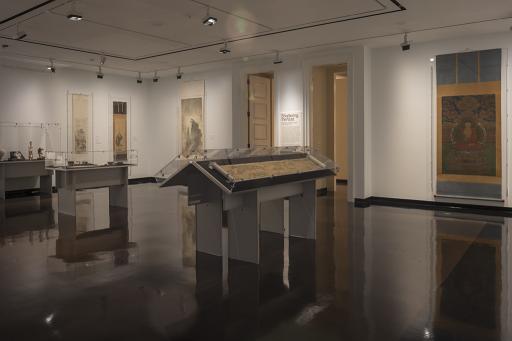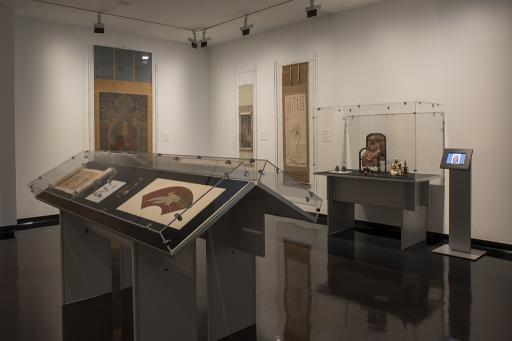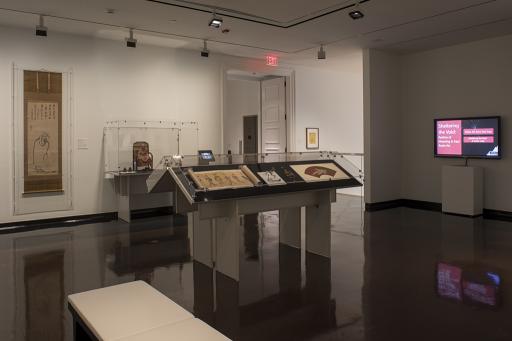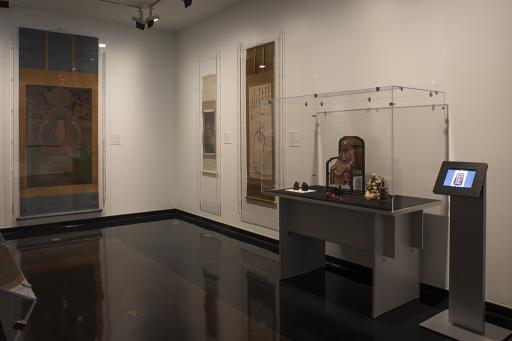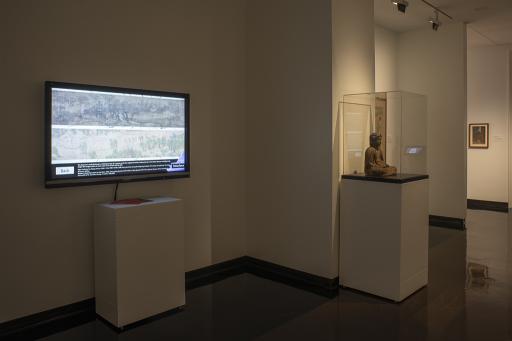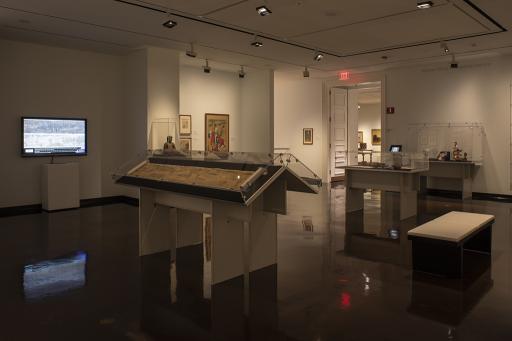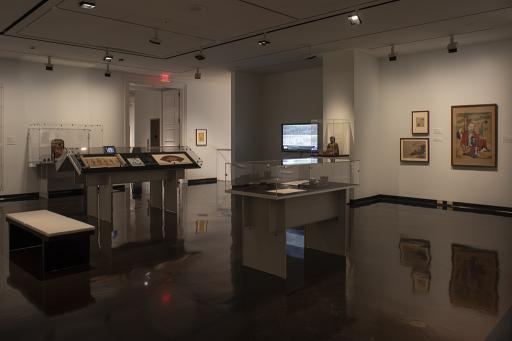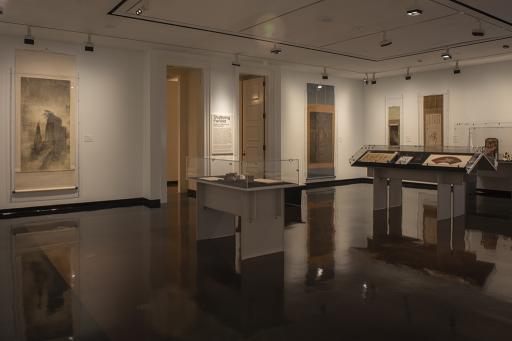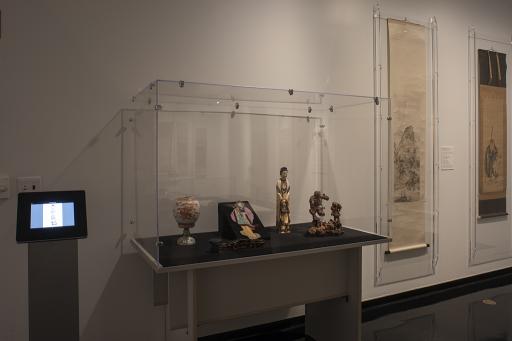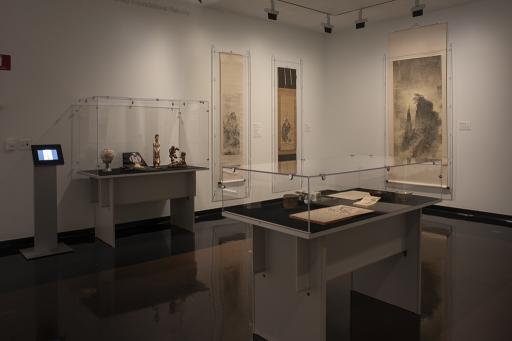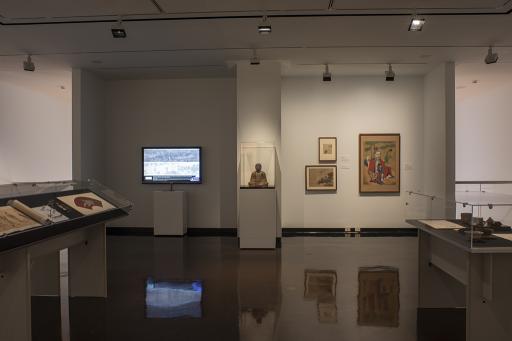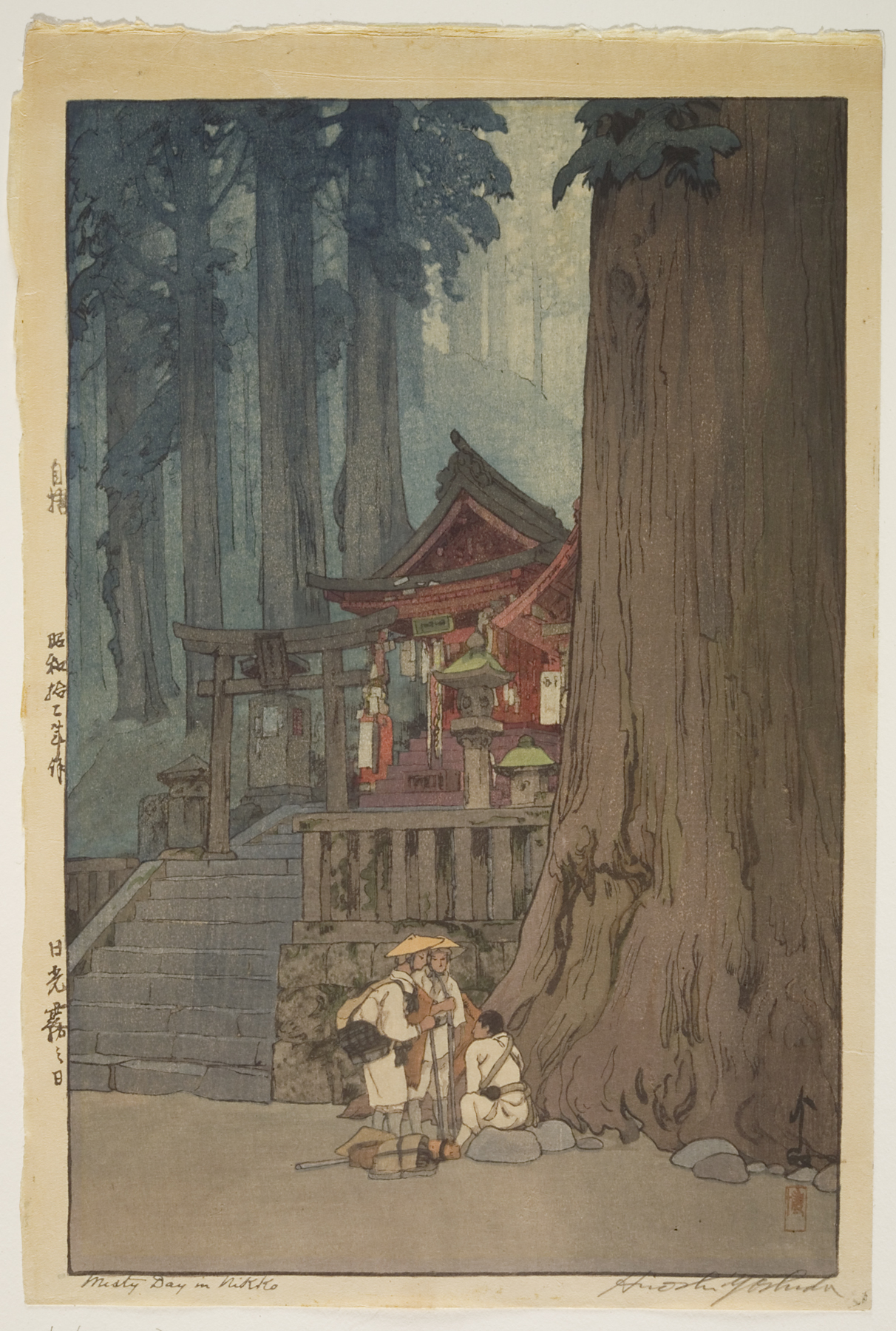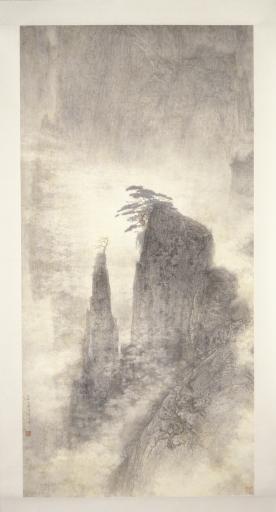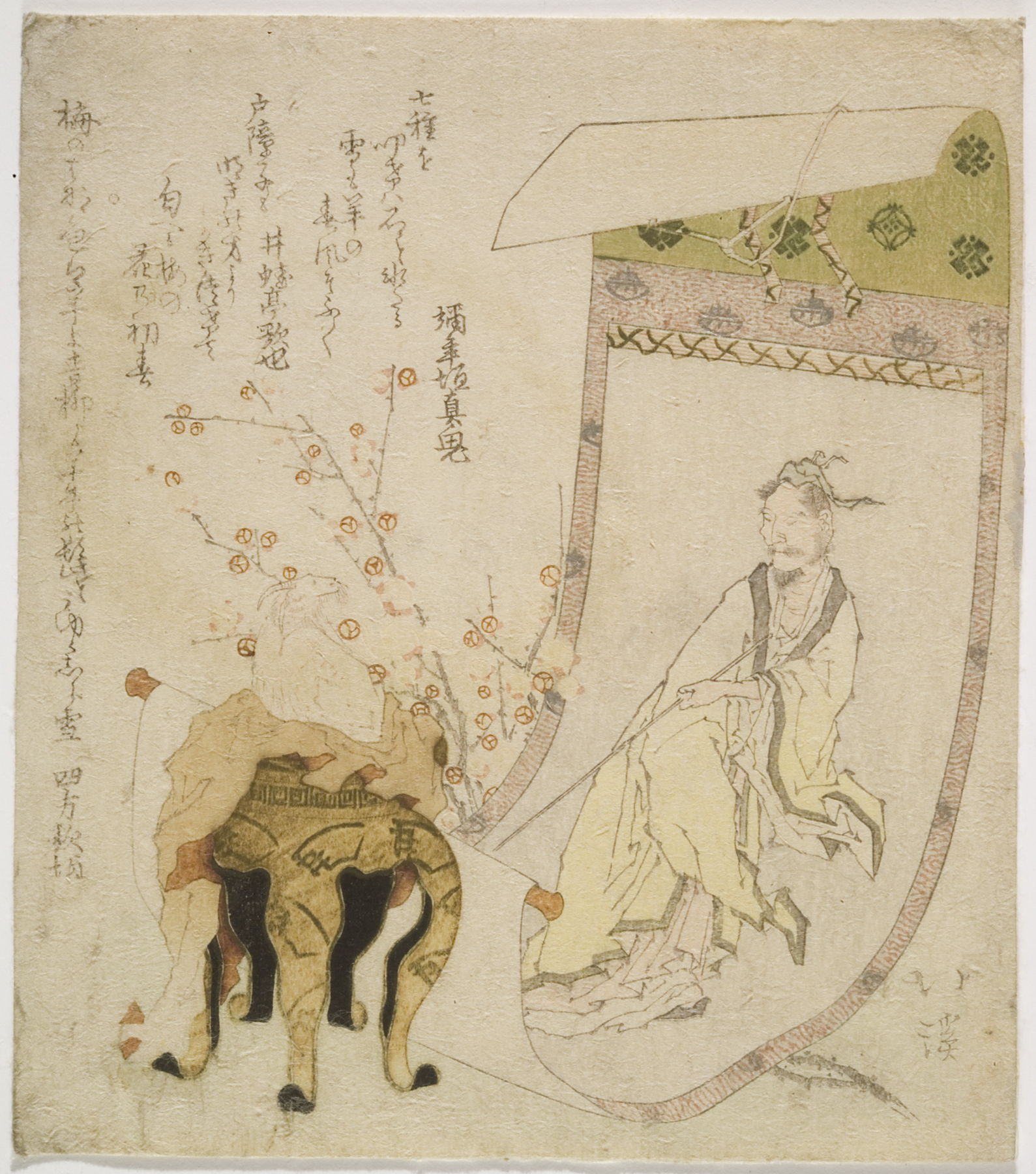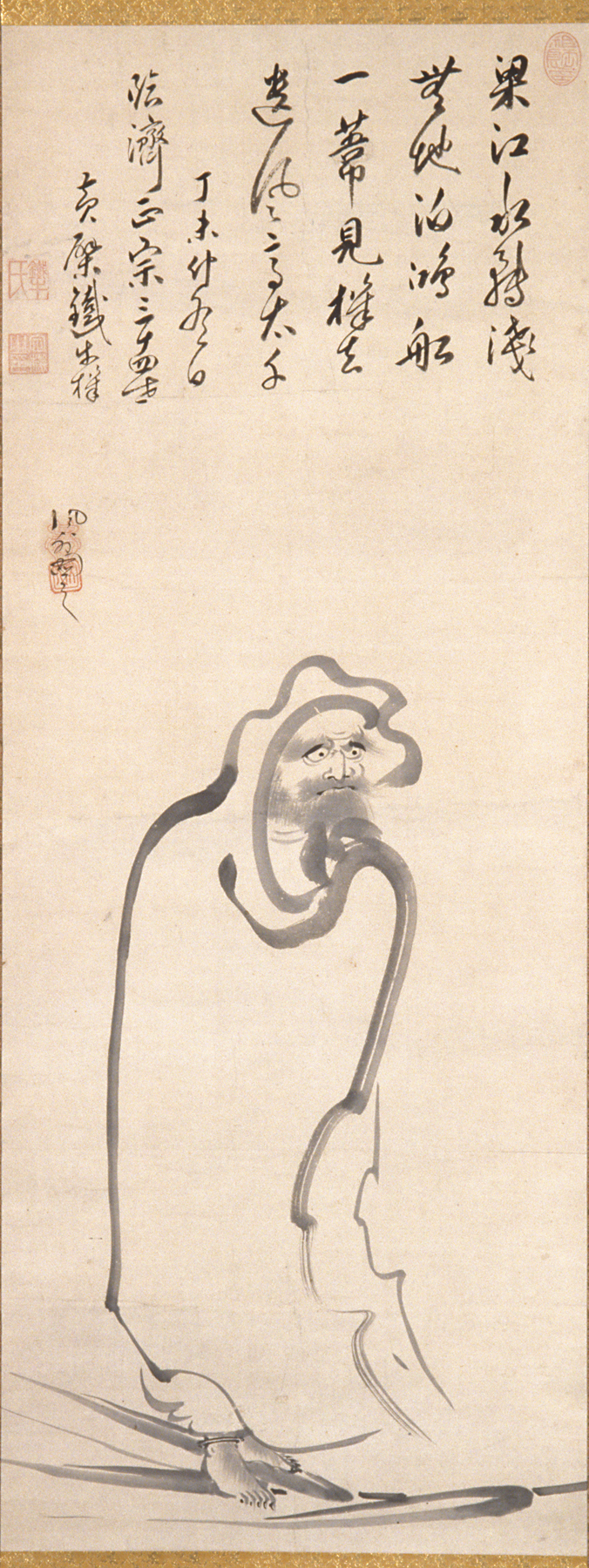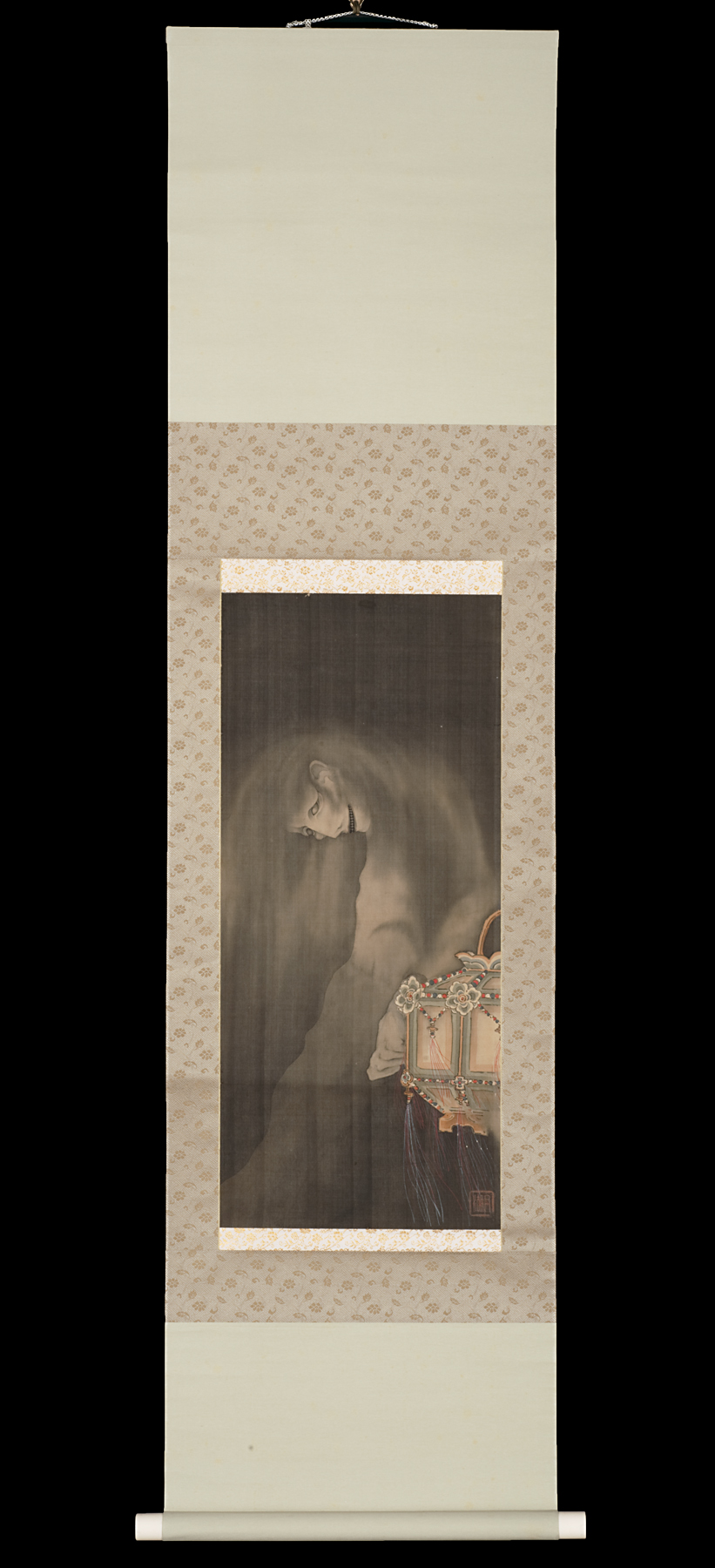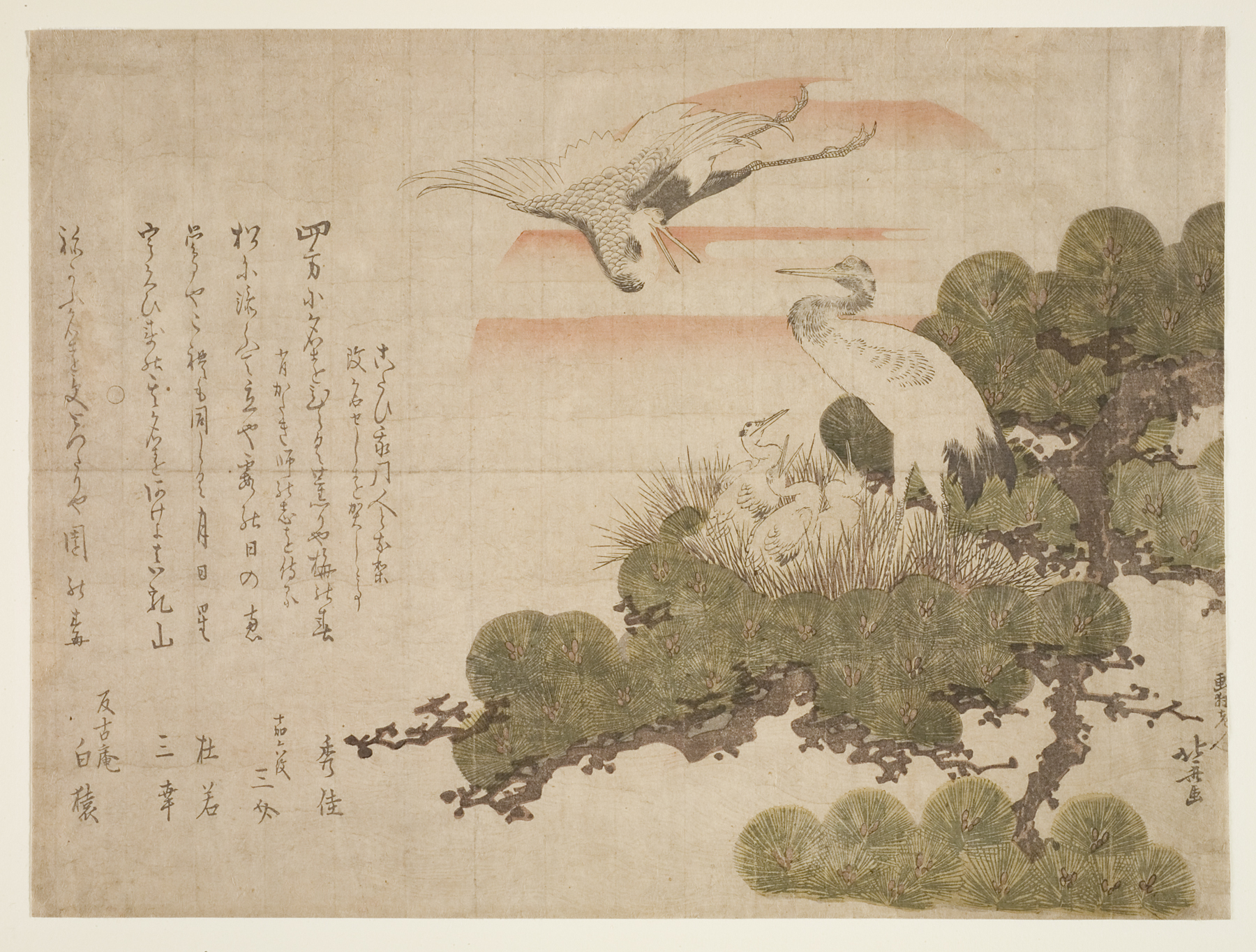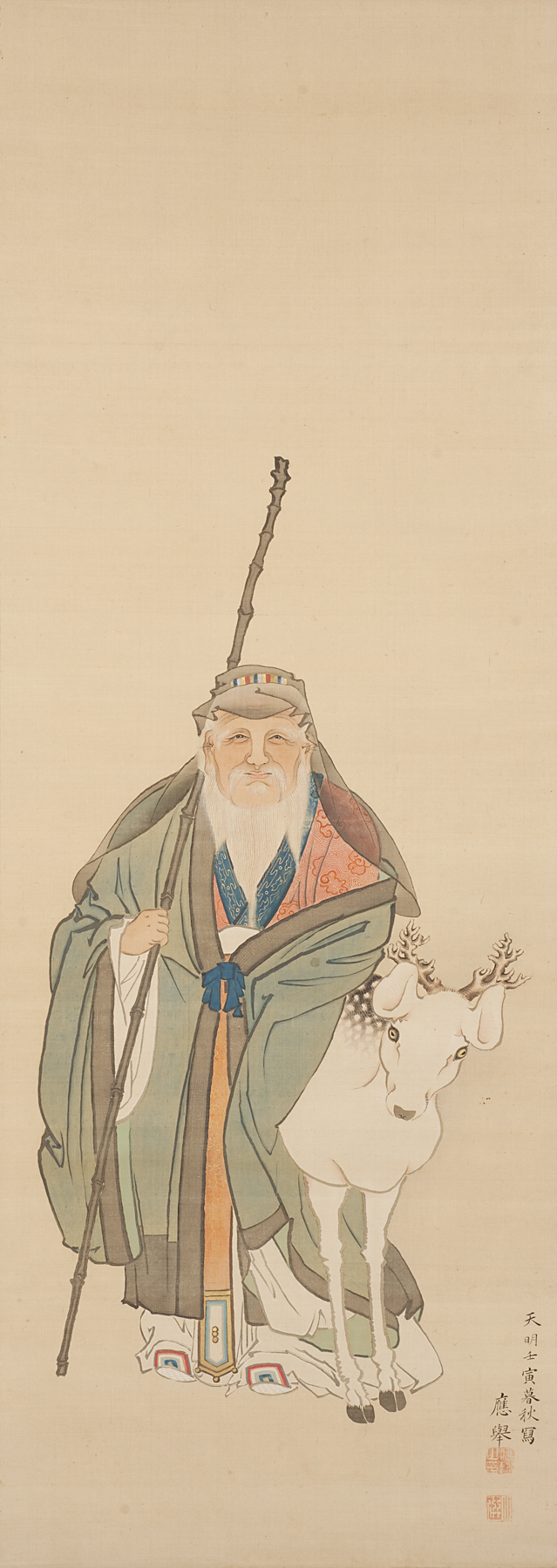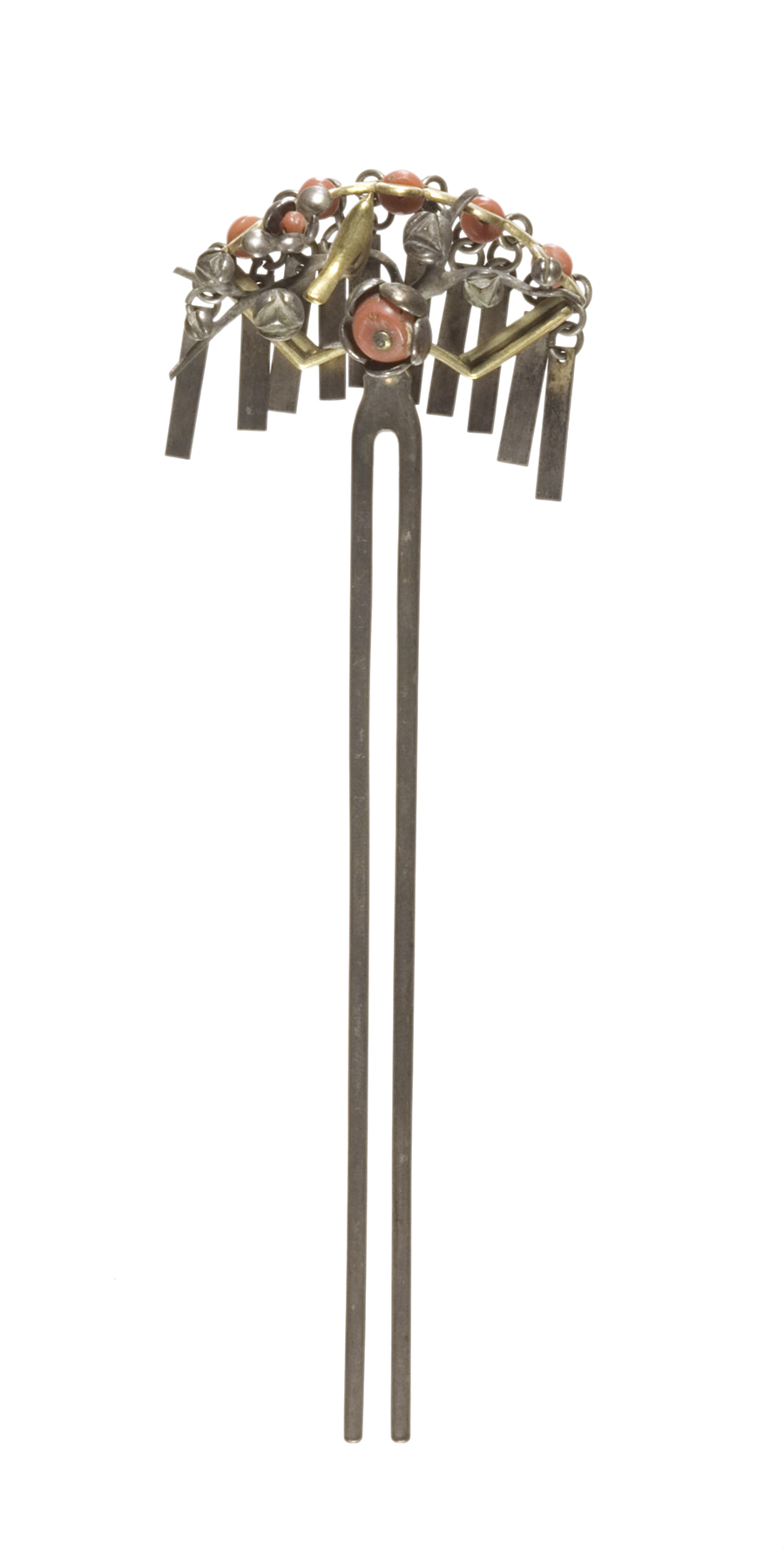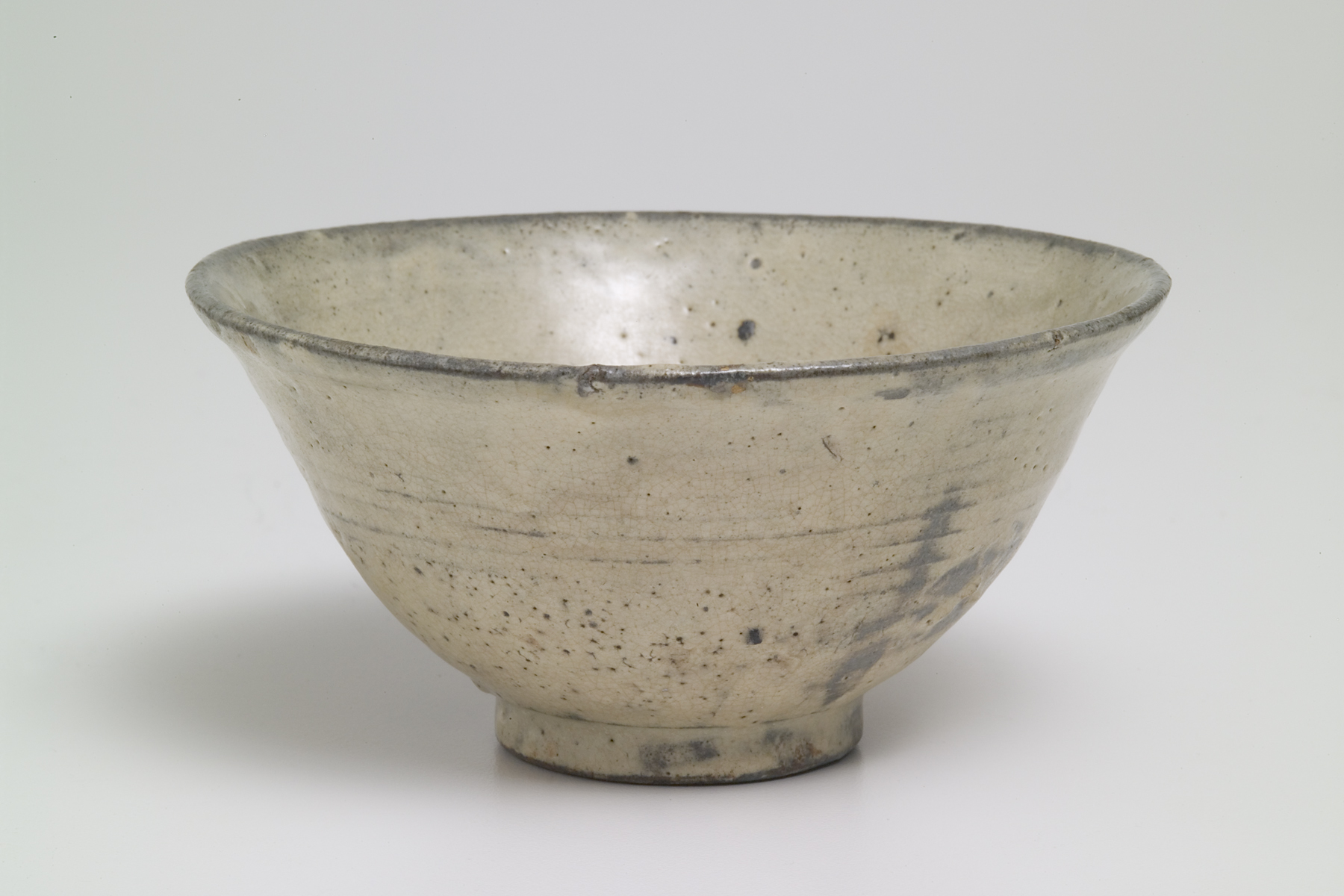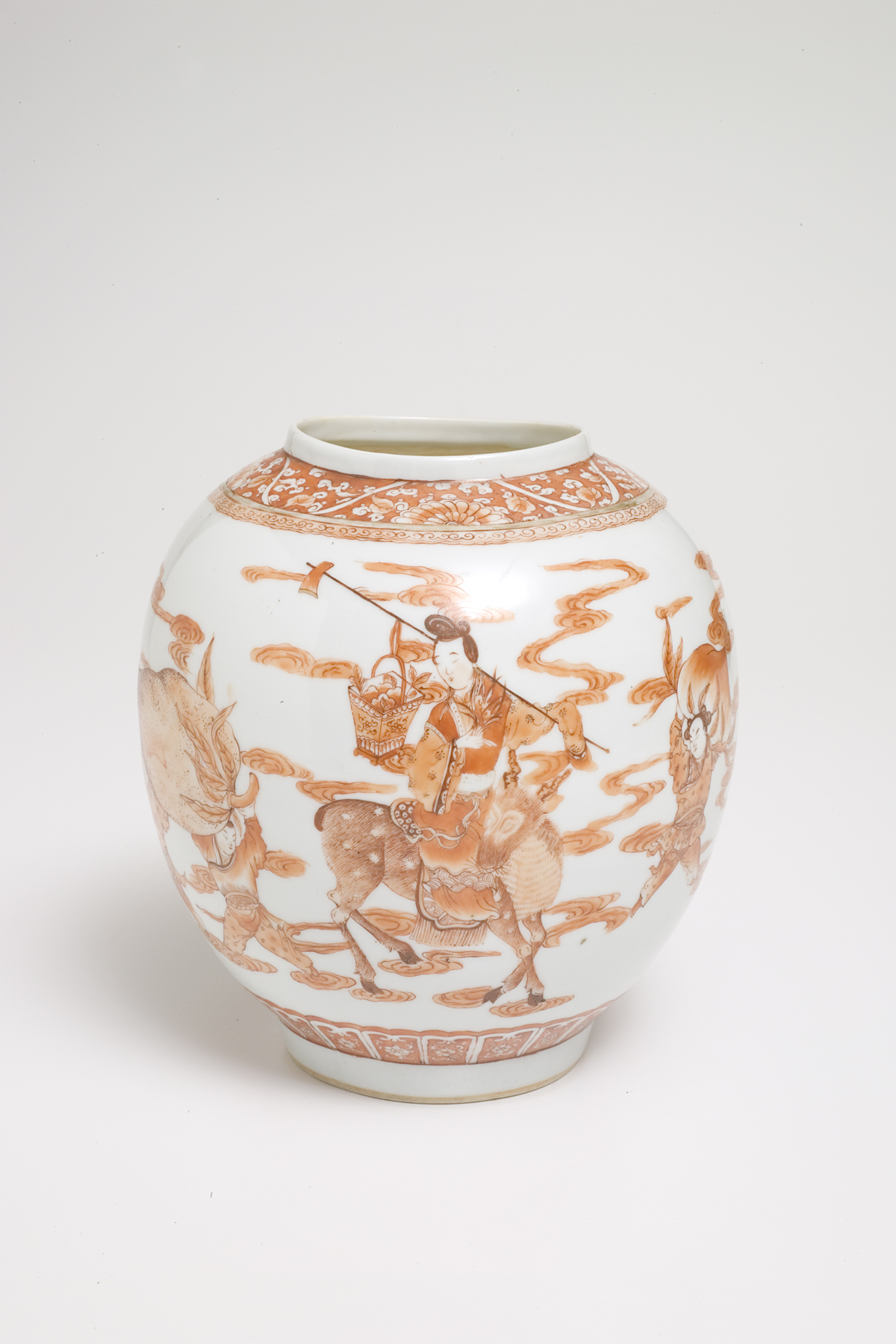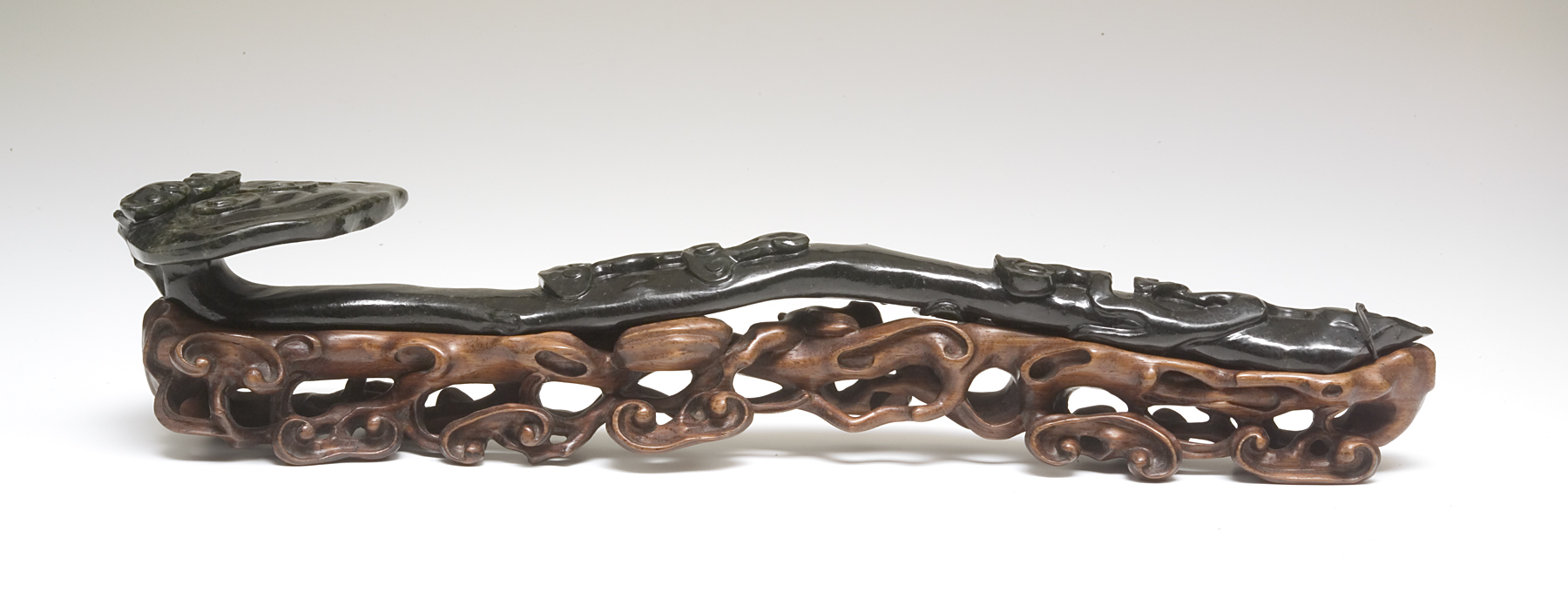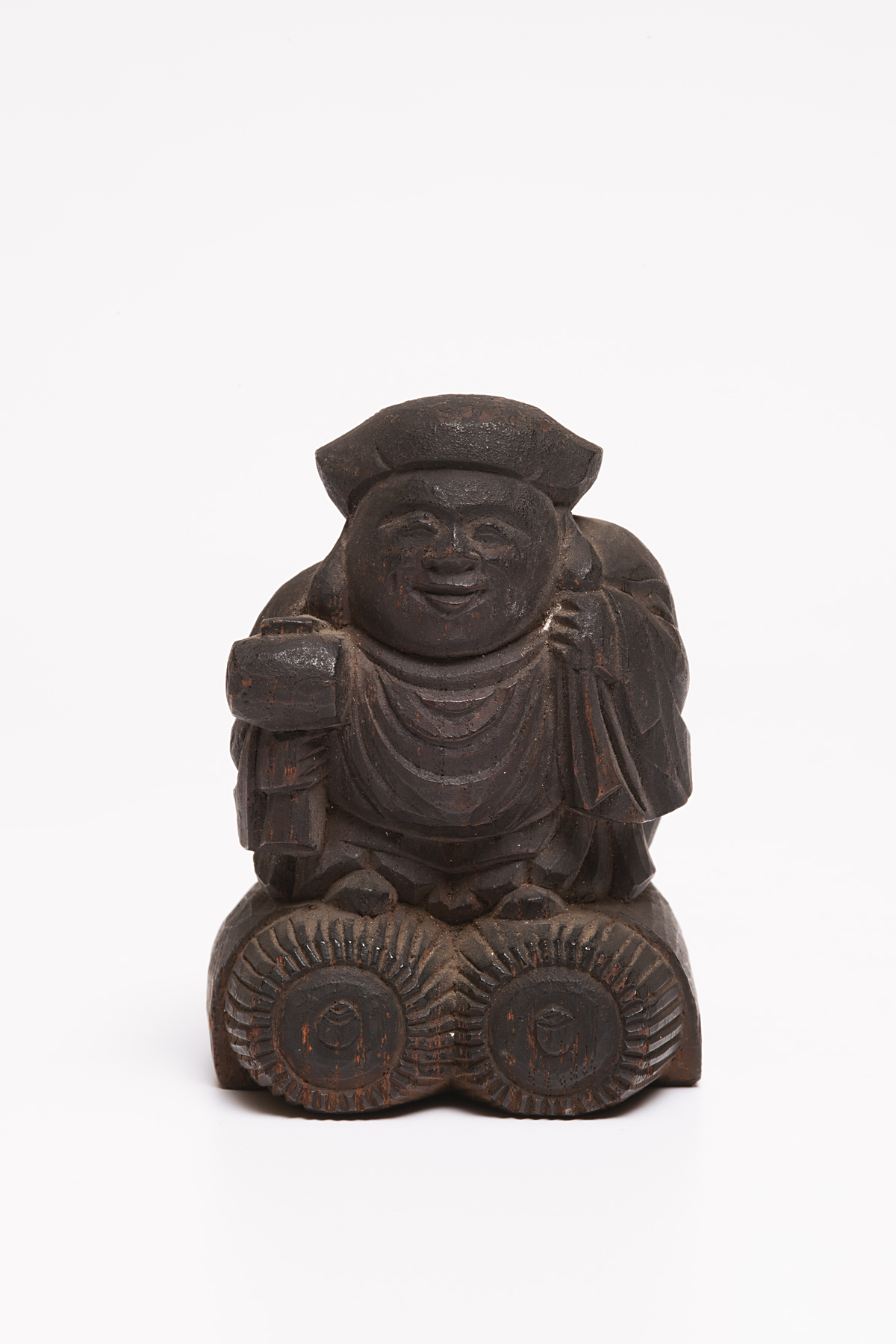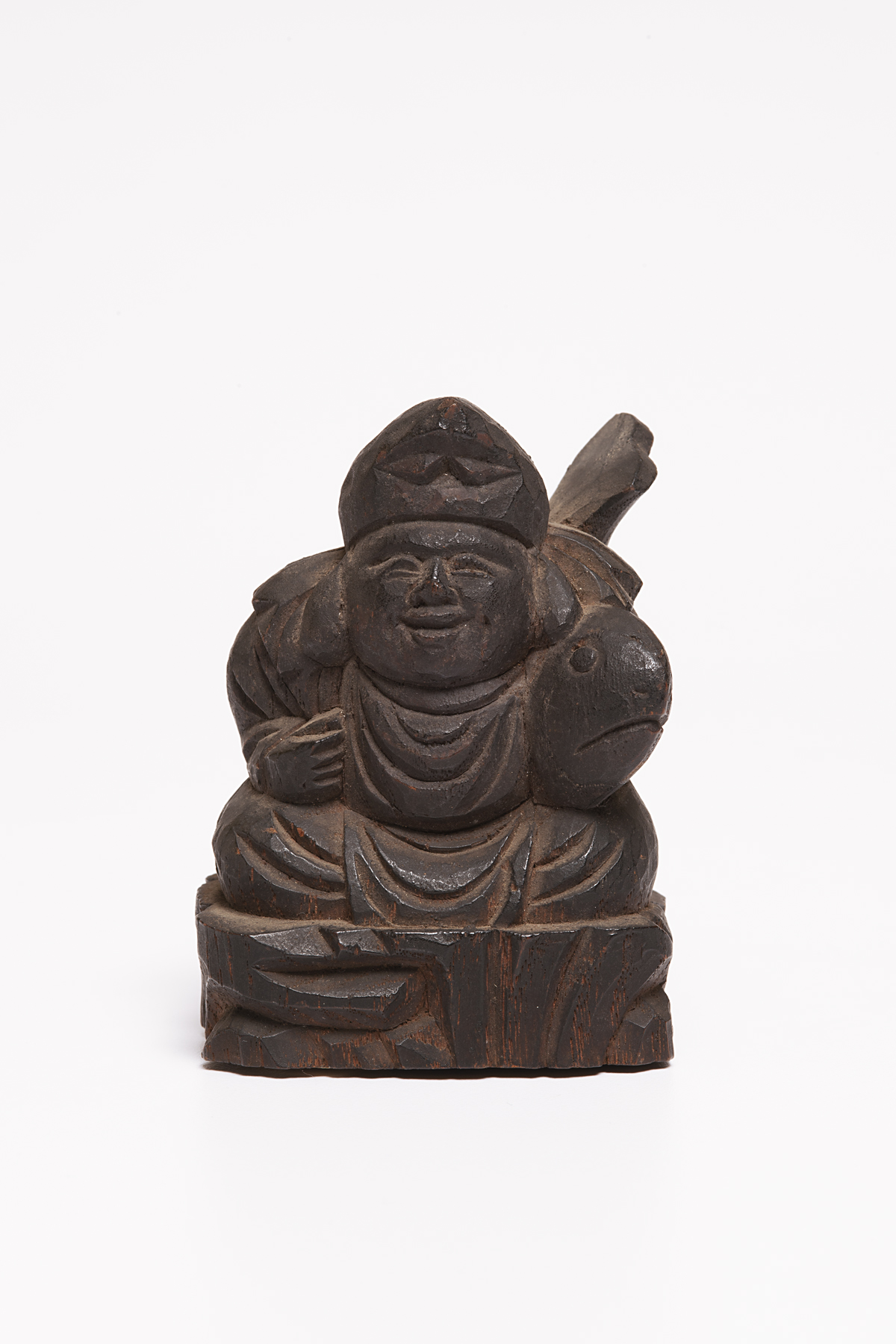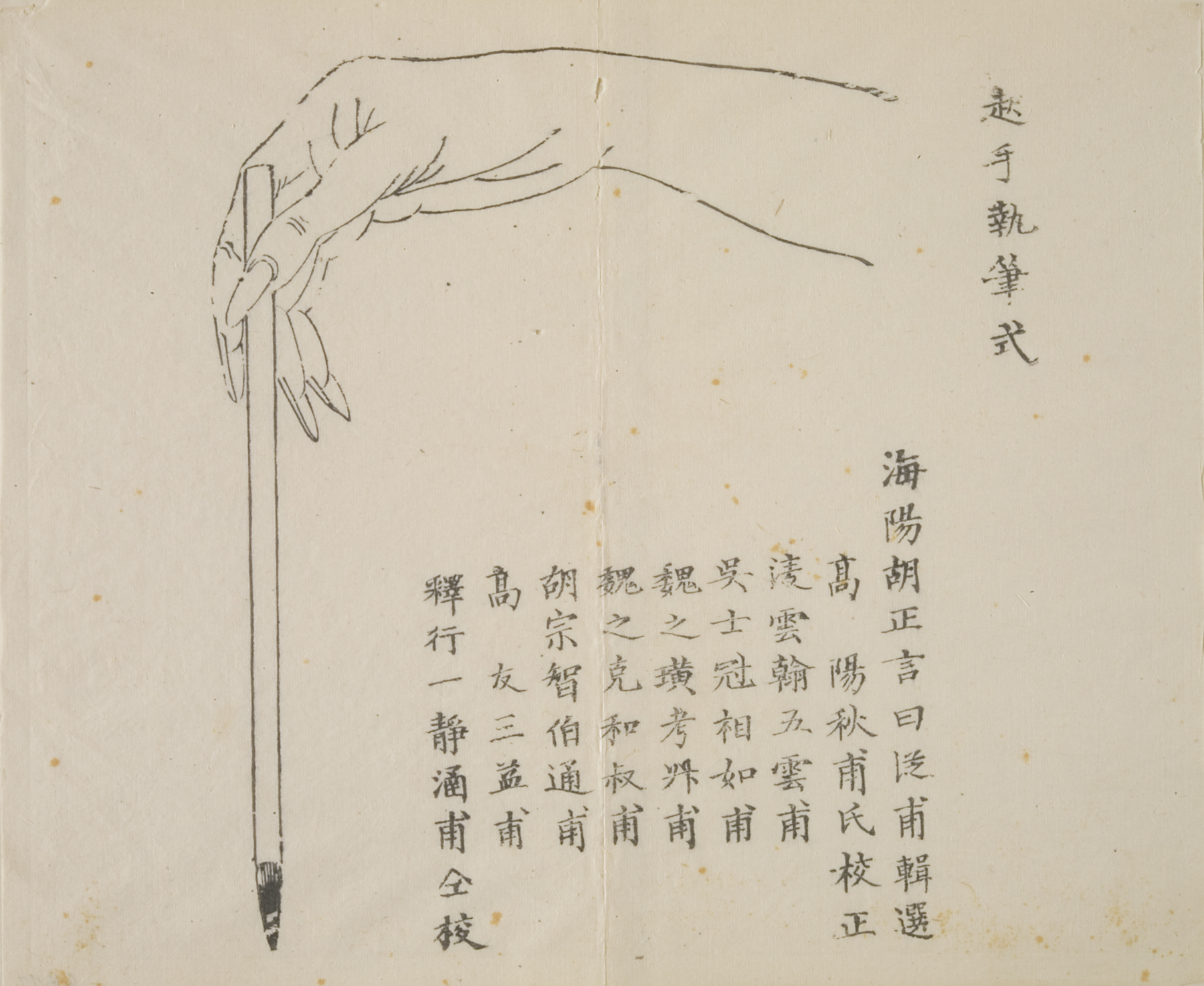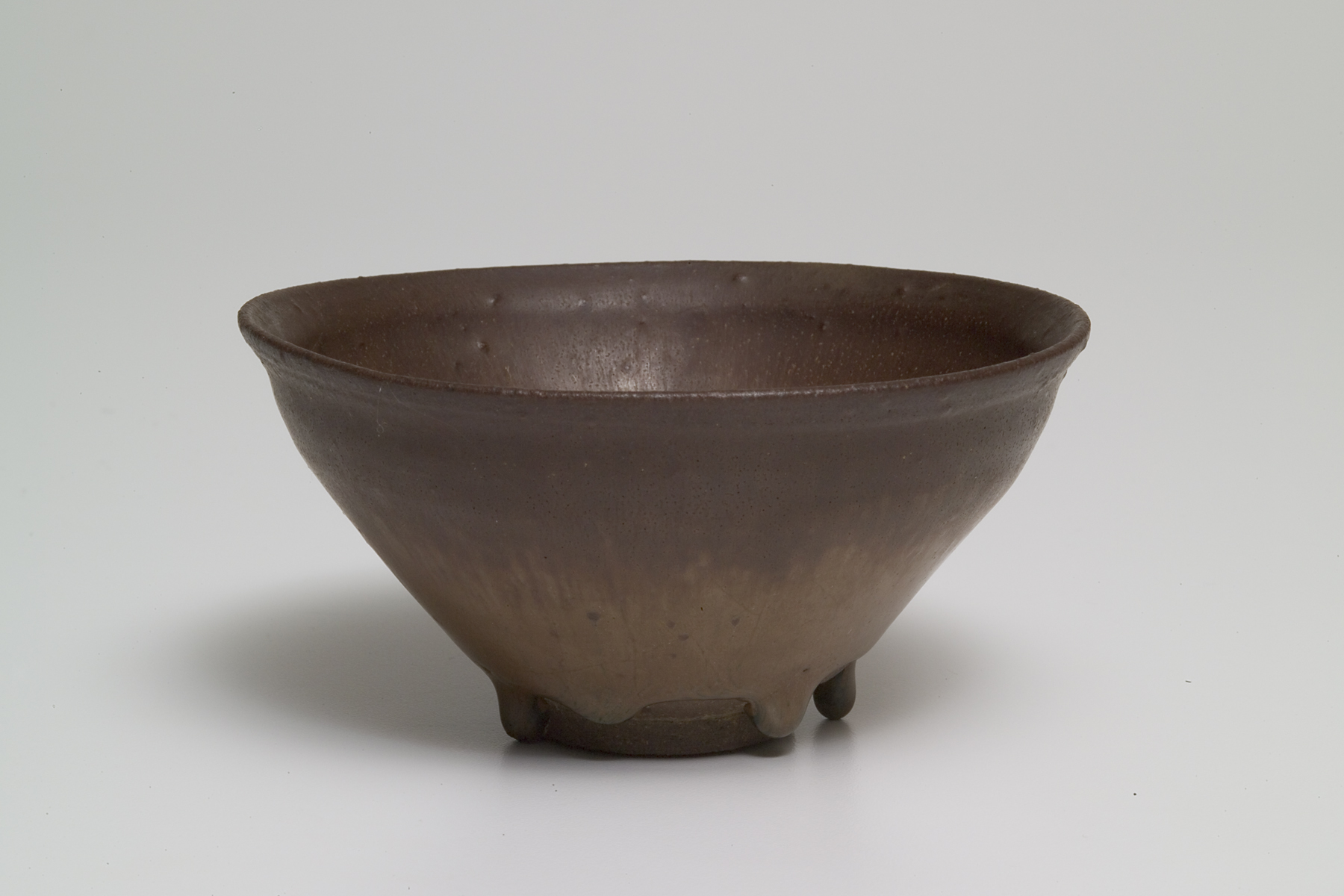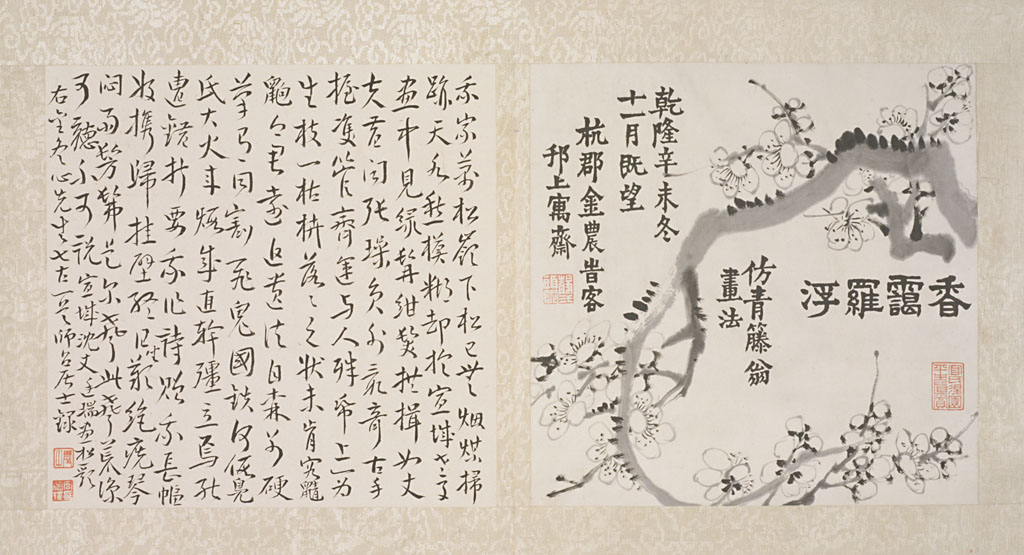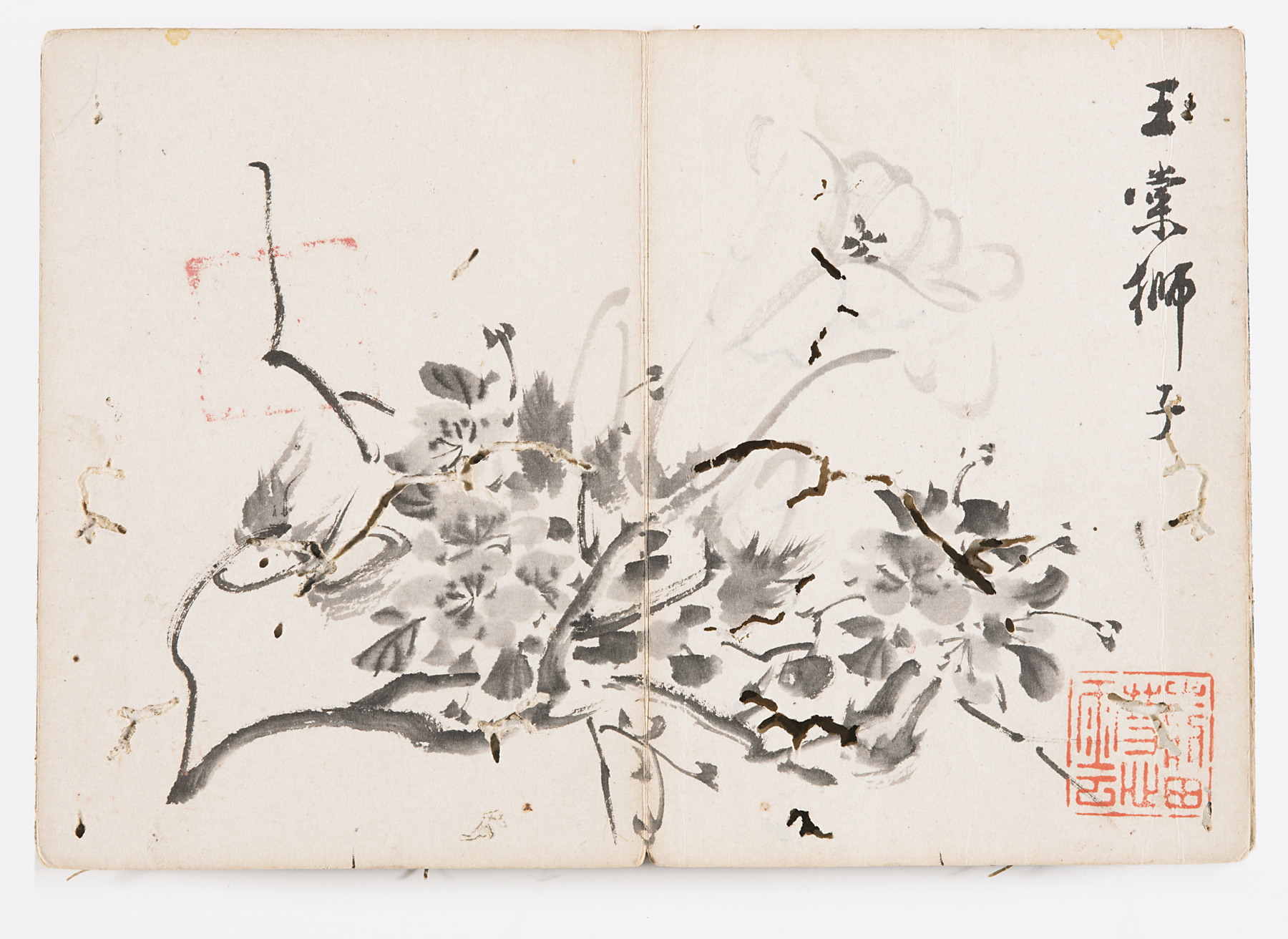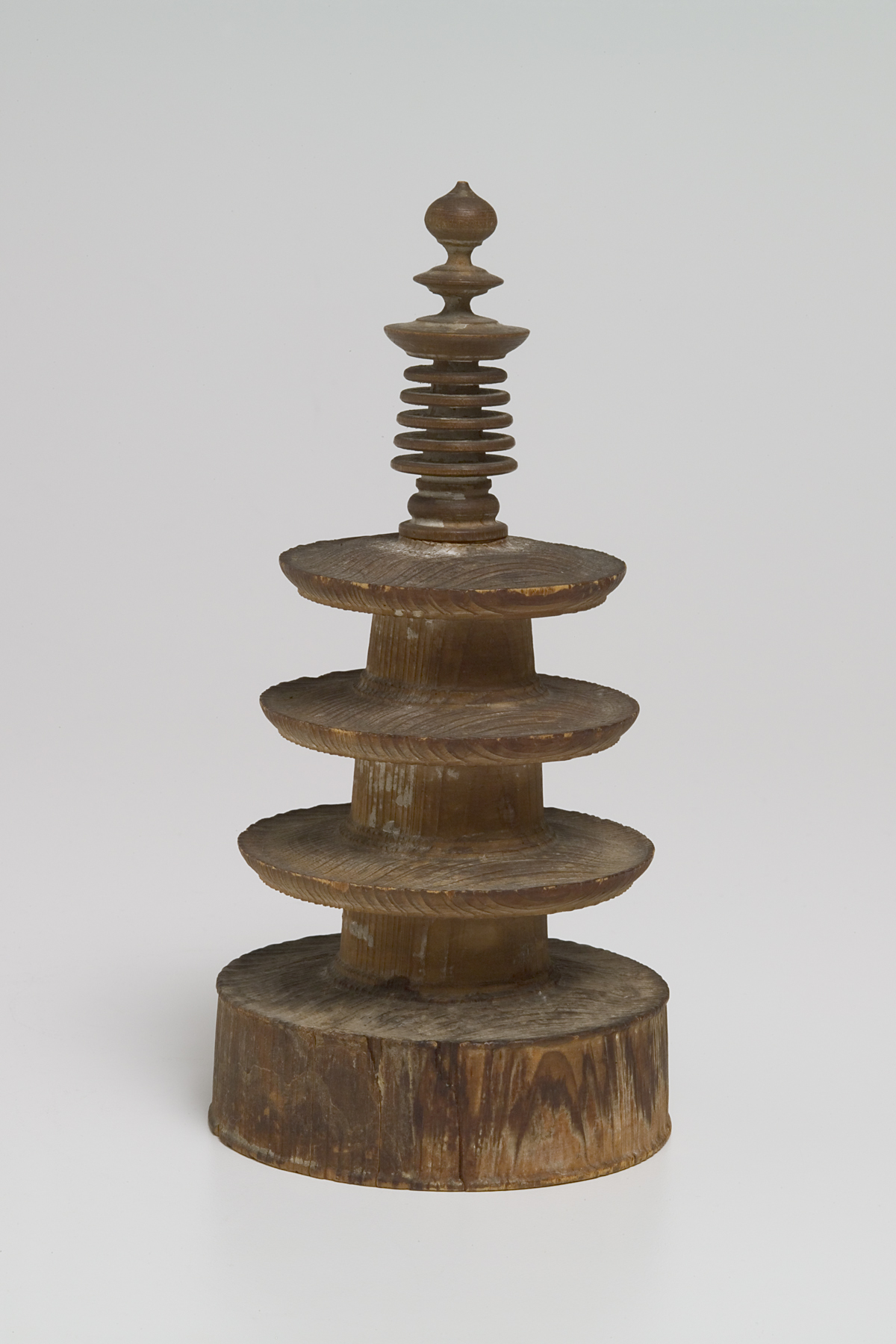Shattering the Void: Realms of Meaning in East Asian Art
Exhibition
Exhibition Overview
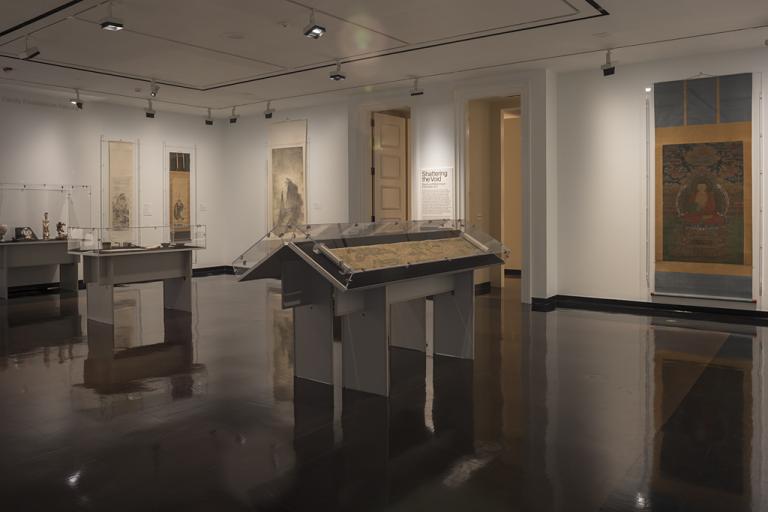
Shattering the Void: Realms of Meaning in East Asian Art
Kris Ercums, curator
Rachel Straughn-Navarro, curator
Rachel Straughn-Navarro, curator
July 16, 2019–August 11, 2019
Gallery 408, Spencer Museum of Art, University of Kansas, Lawrence, Kansas
Shattering the Void moves through representations of everyday life to otherworldly realms from Chinese, Korean, and Japanese art, addressing themes such as longevity, transcendence, and myths and legends.
Exhibition images
Works of art
陳少梅 Chen Shaomei
Cultivating Longevity in a Mountain Pavilion,
1940, Republic of China (1911–1949)
Yoshida Hiroshi
Misty Day in Nikkō,
1937, Showa period (1926–1989)
Li Huayi
Totoya Hokkei
painting of the Taoist Immortal Huang Zhuping and sculpture of a goat,
1823, Edo period (1600–1868)
San-shin (mountain spirit),
1800s, Joseon dynasty (1392–1910)
Fūgai Ekun
Daruma crossing the river,
late 1500s–early 1600s, Momoyama period (1573–1615) or Edo period (1600–1868)
Gekko
Oiwa (The Lantern Ghost),
early 1800s, Edo period (1600–1868)
Shakyamuni with Ananda and Kashyapa,
1200s, Goryeo dynasty (918–1392)
Vairocana,
1454, Ming dynasty (1368–1644)
Katsushika Hokusai
cranes in pine tree,
circa 1805, Edo period (1600–1868)
Maruyama Ōkyo
Longevity,
1782, Edo period (1600–1868)
Daoist Immortal He Xiangu textile,
1800s, Qing dynasty (1644–1911)
Shiomi Masanari
inro, netsuke, ojime (fox wedding scene),
early 1700s
Twenty-Four Beauties,
circa 1736–1795, Qing dynasty (1644–1911)
kanzashi hairpin,
date unknown
Cai Xinchun
hair ornament,
late 1800s–early 1900s, Qing dynasty (1644–1911)
tea bowl,
1500s, Joseon dynasty (1392–1910)
lamp globe,
1800s, Qing dynasty (1644–1911)
布袋 (Hotei with two children),
1800s, Edo period (1600–1868) or Meiji period (1868–1912)
ruyi sceptre,
1800s, Qing dynasty (1644–1911)
Daikoku,
early 1900s, Meiji period (1868–1912)
Ebisu,
early 1900s, Meiji period (1868–1912)
brush rest with deer figurine,
1800s, Qing dynasty (1644–1911)
Jieziyuan Huazhuan,
late 1800s, Qing dynasty (1644–1911)
tea bowl,
Song dynasty (960–1279)
Qingming Festival on the River,
1600s, Ming dynasty (1368–1644) or Qing dynasty (1644–1911)
Qin Yuqi
Album of 12 Plum Blossoms (with facing calligraphy),
1888, Qing dynasty (1644–1911)
Zhang Xiong
One Hundred Flowers Unfolding in Your Palm,
1800s, Qing dynasty (1644–1911)
Hōkan Shaka Nyorai,
Edo period (1600–1868)
Hyakuman-tō (three-tiered pagoda),
1700s or 1800s, Edo period (1600–1868)
茶碗 chawan (tea bowl),
1700s, Edo period (1600–1868)
Daruma nesting dolls,
late 1900s
lamp stand,
1800s, Qing dynasty (1644–1911)
Konoike Tomoko
mimio-Odyssey,
2005
Daruma,
early 1800s, Edo period (1600–1868)
brush washer with plum branches,
early 1900s, Republic of China (1911–1949)
water dropper,
1700s–1800s, Joseon dynasty (1392–1910)
Events
July 10–July 11, 2019
Workshop
10:00AM–7:00PM
Spencer Museum of Art, Flex Space, 320, Spencer Museum of Art, Reception Room, 307, Spencer Museum of Art, Kemper Family Foundations Balcony, 408, Spencer Museum of Art, Stephen H. Goddard Study Center, 305
July 19, 2019
Workshop
9:00AM–4:00PM
Spencer Museum of Art, Flex Space, 320, Spencer Museum of Art, Reception Room, 307, Spencer Museum of Art, Kemper Family Foundations Balcony, 408
August 11, 2019
Talk
2:00–3:00PM
Spencer Museum of Art, Kemper Family Foundations Balcony, 408
